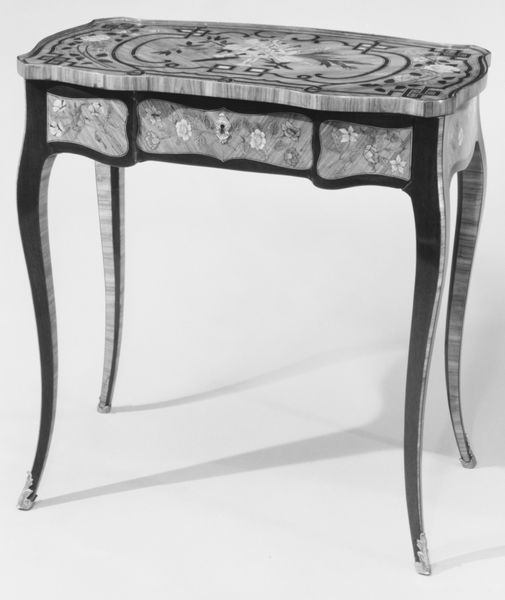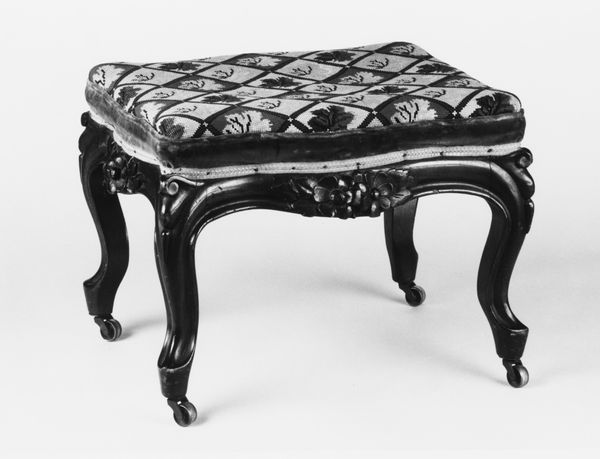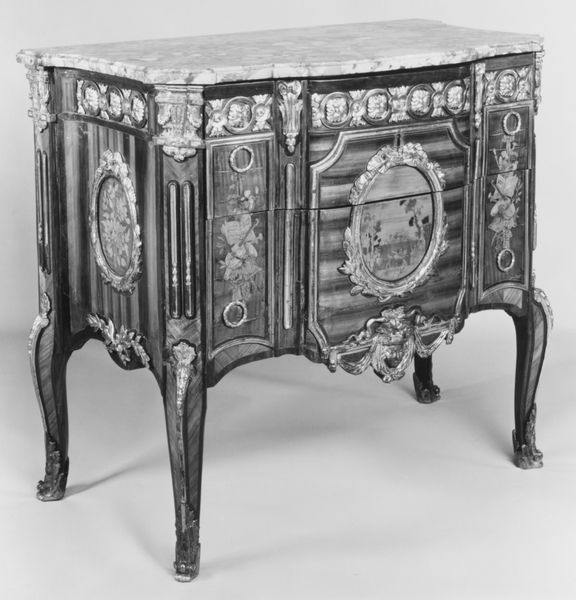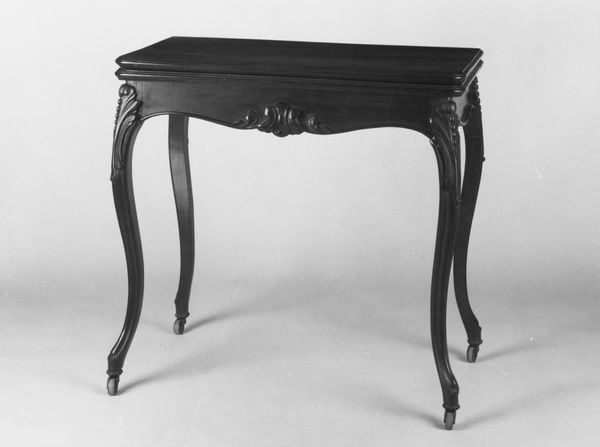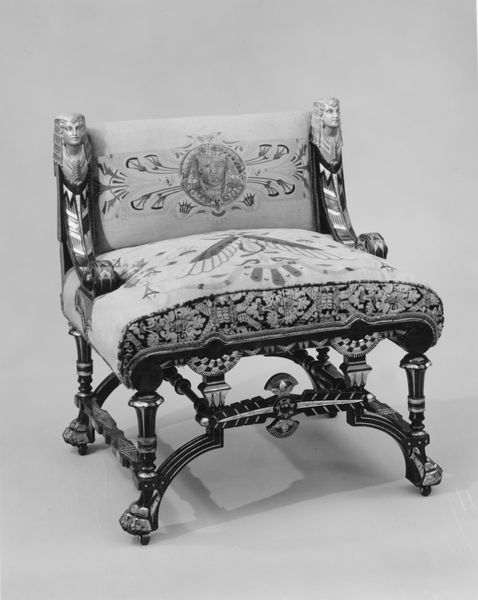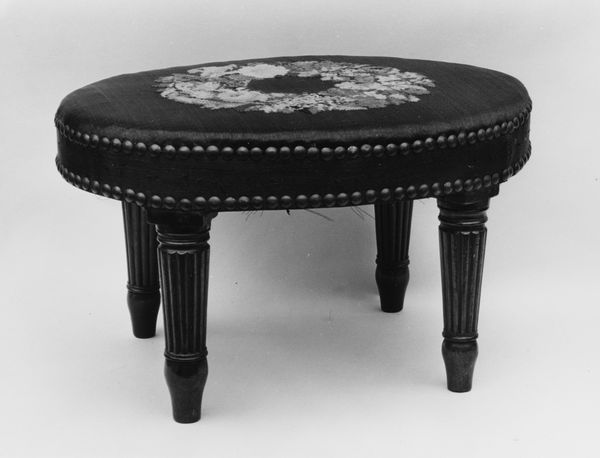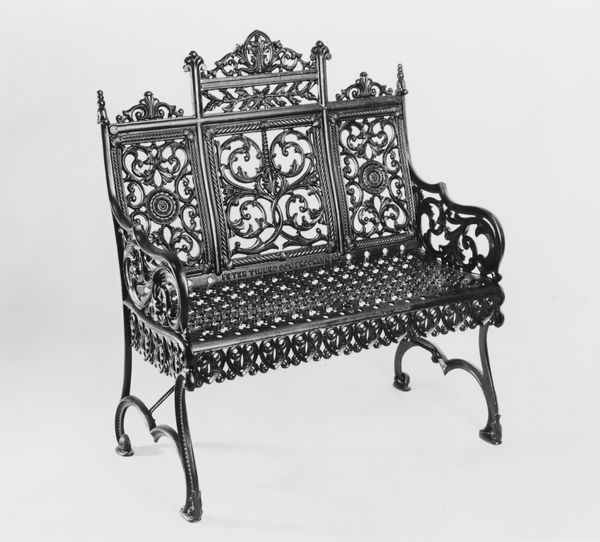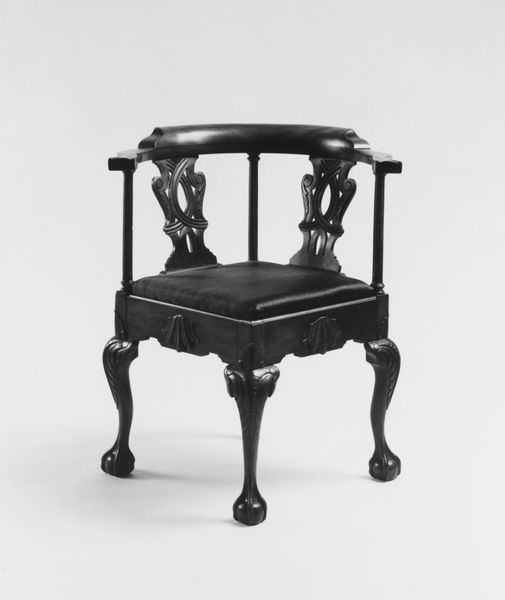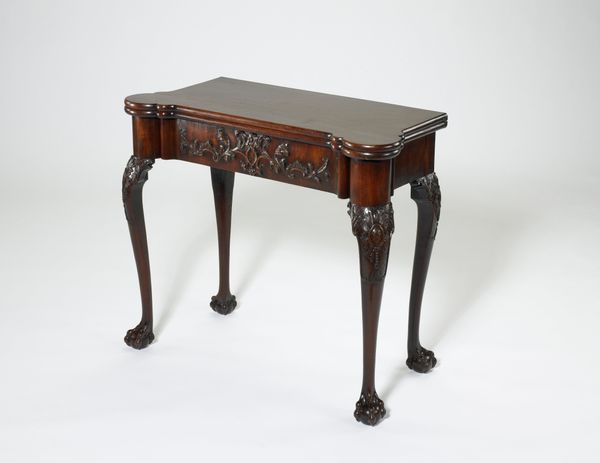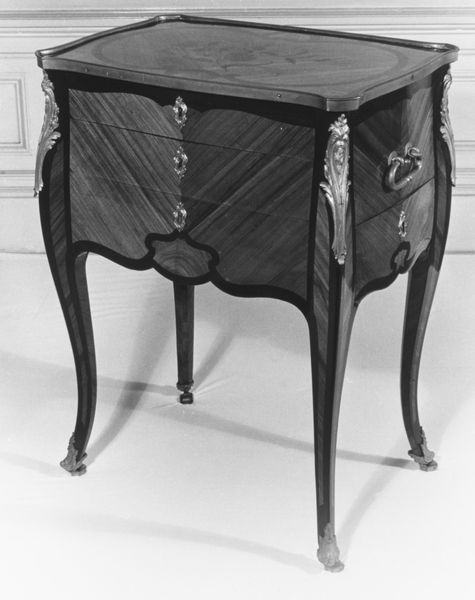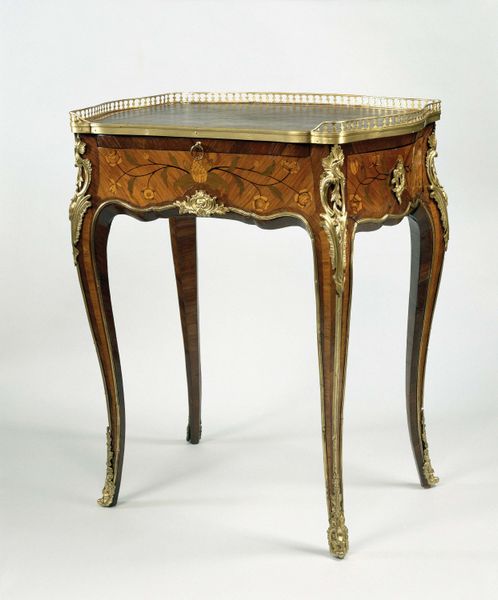
carving, sculpture, wood
#
carving
#
sculpture
#
furniture
#
sculpture
#
wood
#
decorative-art
#
rococo
Dimensions: 38 × 36 1/2 × 20 in. (96.5 × 92.7 × 50.8 cm)
Copyright: Public Domain
Curator: Take a moment to observe this exquisite slant-top desk, currently residing here at the Metropolitan Museum of Art. Crafted by Jean-Baptiste I. Tuart, it likely dates to somewhere between 1730 and 1765. Editor: The first thing that strikes me is the incredible amount of handwork that must have gone into creating this desk! The sinuous curves and the intricate wood marquetry just speak volumes about artisanal skill. Curator: Absolutely. Furniture like this wasn't simply functional; it served as a symbol of status and refinement, especially during the Rococo period. Its owners weren't just buying storage; they were buying into a certain lifestyle and projecting their position within the French aristocracy. Editor: The construction process is what captivates me. It's so important to understand that wood was painstakingly shaped, joined, and polished. Think of the apprentice system and workshop hierarchy needed to execute these kinds of details. Curator: Indeed. And, looking closely, you can see where different social networks came together through the materials as well, like ivory or exotic woods suggesting far-flung trade connections from different continents. This piece exemplifies the globalization trends taking root then. Editor: Exactly! And each flower, scroll, and curve carved into the wood required a specialized level of mastery passed down from one generation to the next. We tend to look past the manual labor when focusing on design elements and artistic expression, but what about those artisans? Curator: Right, considering who designed the desk and where the materials originate shifts focus from personal artistry and brings up economic circumstances surrounding luxury markets like decorative arts that continue influencing craft practices. Editor: Examining objects like this reminds me that beauty and utility often involve a complex mix of talent, resources, and working conditions we still grapple with now! Curator: Thinking about this piece as both a tool and historical record gives depth into what design can symbolize during eras of massive change like the early days of capitalist global trades!
Comments
No comments
Be the first to comment and join the conversation on the ultimate creative platform.
